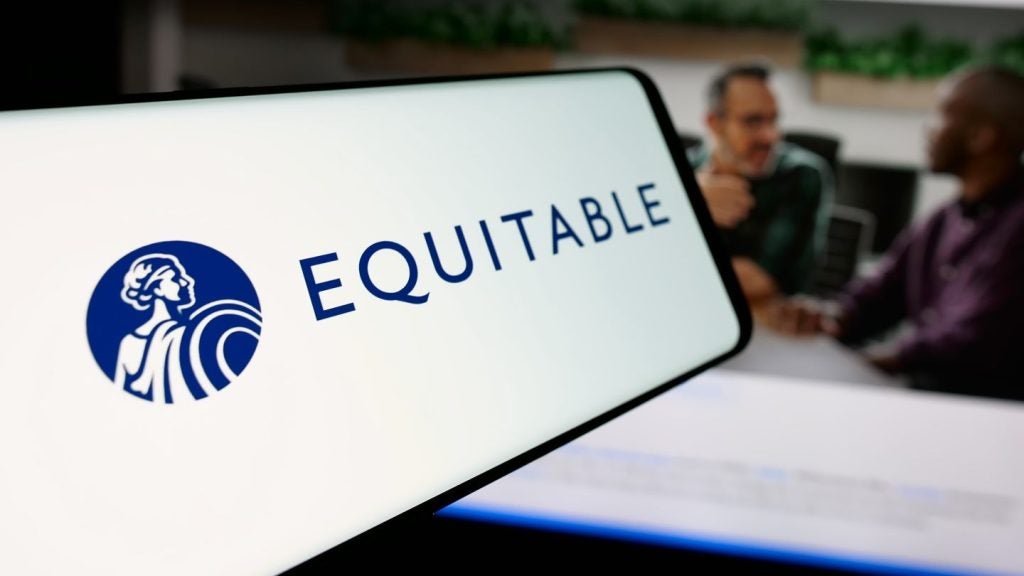A Central and Eastern
European success story, Slovenia and its efficient, well-regulated
insurance industry enjoyed robust growth until the onset of the
financial crisis in 2008. Although Slovenia’s economic growth has
stalled, low penetration still offers opportunity in the life
insurance segment.
 In terms of size,
In terms of size,
Slovenia’s insurance industry is one of the smallest in Europe. But
in terms of organisational effectiveness and regulatory standards,
it has set the pace in Central and Eastern Europe. This is the
conclusion of a study undertaken by the International Insurance
Foundation.
Slovenia’s insurance industry
has a short modern history. This dates back to 1991, when Slovenia
became an independent country following the break-up of the
Socialist Federal Republic of Yugoslavia which had as its other
member states Croatia, Bosnia-Herzegovina, Macedonia, Montenegro,
Serbia and Slovenia.
Slovenia started off with a
big advantage over the other former Yugoslav states. It had been
the hub of Yugoslavia’s economy which in turn had enabled it to
develop strong ties with Western companies. This made the change to
an open market economy comparatively easy.
Capitalising on its
advantages, Slovenia became a member of the European Union in 2004
and in 2007 became the first of the so-called ‘new European Union’
countries to adopt the euro as its currency.
With a population of only
just over 2m, Slovenia is the fourth-smallest country in the euro
area. However, what it lacks in size it has made up for in economic
development and, according to the US Central Intelligence Agency,
boasts the highest per capita GDP in Central Europe.
According to the World Bank,
Slovenia’s annual GDP in 2010 stood at just under $48bn. Gross
national income per capita in the same year was $24,000 which ranks
Slovenia as a high income country.
A tough
beginning
Despite the advantages
Slovenia had over its former co-member Yugoslav states,
establishing a modern insurance industry represented a massive
challenge.
Following the end of the
World War II, the Yugoslav insurance industry had been nationalised
with each of the country’s member states having its own insurance
company or companies.
In Slovenia the insurance
monopoly was held by Zavarovalnica Triglav (Triglav) which traces
its origins back to the founding in 1900 of Vzajemna zavarovalnica
as the first Slovenian insurance company funded by domestic
capital.
Triglav was formed in 1976
following a series of mergers involving all 14 state-controlled
insurers in Slovenia.
As a first step towards
liberalisation of Slovenia’s insurance market, Triglav was
converted from a mutual insurer into a public company in 1990.
Simultaneously, as a kick-start to competition in the insurance
market Triglav was broken up into four separate insurance
companies: Triglav itself, Adriatic Sloven, Zavarovalnica Maribor
and Zavarovalnica Tilia.
The next step was the
modernisation of regulation of Slovenia’s insurance industry to
bring it in line with European Union norms.
The first move came in 1994
with the adoption of the Insurance Act and in the following year
the establishment of an independent insurance regulator, the
Agencija za zavarovalni nadzor (AZN).
In 2000, the original
insurance act was replaced by a new act which has been subject to
six subsequent amendments.
By the end of 2010 there were
17 insurance companies operating in Slovenia, according to the
Slovenian Insurance Association (SIA). Of these, 10 were composite
insurers, two operated exclusively in the life segment and five
operated exclusively in the general insurance segment.
Growth in the number of
players in the Slovenian insurance market was in no small way
influenced by the country’s rapid economic development.
In terms of GDP growth,
Slovenia sustained a solid annual average of 3.9% between 1999 and
2003. The country’s GDP growth rate then accelerated markedly,
averaging 5.4% between 2004 and 2007.
Strong economic growth proved
to be a big positive for Slovenia’s insurance industry. According
to the SIA, the total insurance market’s premium income grew from
€1.18bn ($1.65bn) in 2002 to €2.02bn in 2008.
This represented a CAGR of
just under 9.4%. Life insurance premium income enjoyed the fastest
growth, increasing at a CAGR of 15.7% between 2002 and 2008.
General insurance premium income reflected a CAGR of 7.1% during
the six year period.
Financial crisis took
a toll
The global economic crisis
which began making itself felt in 2008 had extremely negative
repercussions for Slovenia. According to the World Bank, in 2008
the country’s GDP growth rate fell to 3.5% while in the following
year a massive 7.8% decline in GDP was recorded.
Subsequent recovery has been
modest with an increase in GDP of 1.2% recorded in 2010. The
Organisation for Economic Cooperation and Development anticipates
that Slovenia’s GDP growth rate will increase slightly to 1.8% in
2011.
Against the background of a
shrinking economy, Slovenia’s life insurance market experienced a
setback in 2009 with the SIA recording a decline in premium income
of almost 2% to €630.1m.
This decline followed
increases of 12.7% in 2007 and 5.5% in 2008. General insurance
premium income proved more resilient and continued to grow in 2009,
rising by 4.8% to €1.44bn.
This pattern reversed in 2010
with life insurance premium income recording a modest increase of
4.1% which took it to a new high of €656m. General insurance
premium income fell by 0.3% in 2010 to €1.438bn.
Of this total, voluntary
health insurance premiums made up just under €410m and conventional
general insurance premiums just over €1.03bn.
The most recent figures
published by the SIA are for March 2011. These indicate that the
trend in the insurance market is similar to that seen in
2010.
Specifically, life insurance
premium income in the first quarter of 2010 of €166.38m was up 3.6%
compared with the same period in 2010. General insurance premium
income in the first quarter of 2011 increased by just under 0.5% to
€416.3m.
Premium income data excludes
business written by other European Union insurers that do not have
units established in Slovenia. Triglav noted in its 2010 annual
report that it considers business written by non-Slovenian insurers
to be negligible.
Foreign
competition
Slovenia has attracted five
foreign insurance companies, though in all but two instances their
entrances into the market have been fairly recent. The two
exceptions are GRAWE and Generali.
Austrian insurer GRAWE became
the first foreign company to take the plunge into Slovenia with the
establishment in 1991of a composite insurance company GRAWE
Zavarovalnica.
Italian insurer Generali
followed in 1996 with the establishment of a composite insurance
company, Generali Zavarovalnica.
The next foreign insurer to
belatedly followed GRAWE’s and Generali’s lead was Austrian insurer
ARAG which established an operation in Slovenia, ARAG zavarovanje,
in 2003.
Although it offers life
insurance, the operation is primarily focused on legal insurance, a
segment of the Slovenian market to which it lays claim to having a
50% share. Since 2004 ARAG has also had a cooperative agreement
with Slovenian composite insurer Zavarovalnica Tilia.
Another Austrian insurer,
Vienna Insurance Group followed in 2004 when it established a
composite insurance company Group Wiener Städtische. Allianz made
its entry into Slovenia as a general insurer only in 2007 through
its Hungarian subsidiary, Allianz Hungária Biztosító
Zrt.
In the same year, Austrian
insurer Merkur Versicherung established a composite insurance
operation in Slovenia.
The most recent foreign
entrant is German insurer Munich Re subsidiary ERGO which
established a life insurance company in Slovenia in 2008 and
commenced operations in the market in 2010. ERGO is also
represented in Slovenia by its bancassurance subsidiary,
Victoria-Volksbanken which established a branch in the country in
2005.

Domestic insurers
dominate
For the most part foreign
insurers have made steady but slow inroads into the country’s
market in terms of market share.
Across the entire insurance
industry foreign insurers’ share of premium income stood at just
under €224m and their combined market share at about 10%. This
combined market share was up from 8.7% in 2009.
In the general insurance
segment in particular foreign insurers have battled to gain a
meaningful market share. In 2010, foreign insurers’ total premium
income of €92m represented a combined market share of only
6.4%.
In the life insurance segment
foreign insurers have achieved more success with total premium
income of almost €132m in 2010 giving them a combined market share
of 20%.
According to data from the
AZN and SIA, Merkur was the top-ranking foreign player in 2010
having generated life premium income of €40.3m. This gave Merkur a
market share of almost 8% ranked it fourth overall in the Serbian
life market.
Merkur was followed by GRAWA
in 2010 having generated life premium income of €22.5m to give it a
market share of just over 4.4%. In third place among foreign
insurers was Generali, which generated life premium income of
€18.2m and achieved a market share of 3.5%.
Slovenian companies Triglav,
Moribar and a mutual insurer, KD Zivljenje held firmly on to the
top three positions in the life market in 2010 with total premium
of €349m giving them a combined market share of 69%.
Triglav was by far the most
dominant insurer in 2010, holding a 37% share of the overall
insurance market and shares of 35.6% and 41.1%, respectively, in
the general and life insurance segments.
In distant second position
was Maribor, with an overall market share of 13.4%, a 14.1% share
of the life insurance segment and a 13.1% share of the general
insurance segment. KD Zivljenje, which provides life insurance
only, had a 13.9% share in the life segment.
Notably, KD Zivljenje’s focus
is on unit-linked insurance products, a market sector which it
pioneered in Slovenia in 2001 and in which it is the biggest
player. KD Zivljenje is a subsidiary of Slovenian financial
services company KD Group which is also active in investment and
private banking and asset management.
Through KD Zivljenje, KD
Group is expanding its life insurance operations in the region and
already has small units in Romania, Slovakia, Bulgaria, Czech
Republic and Croatia.
Geographic expansion is also
a high strategic priority for Triglav which is not having it all
its own way in its home country.
Over recent years Triglav, in
which the Slovenian state still has a stake of about 63%, has seen
its market share steadily eroded. Illustrating the decline,
Triglav’s share of the entire Slovenian insurance market in 2005
stood at 42.9%, according to the AZN.
Triglav’s share of the life
insurance segment in that year was 50% and its share of the
general-insurance segment 55%.
Notably, of Triglav’s
competitors none have individually made major market share gains at
its expense with its lost market share largely dissipated across
the market.
However, in its 2010 annual
report, Triglav conceded: “Maintaining the leading position in the
[total insurance] market is becoming increasingly challenging as
the competition is trying to expand its market share by contracting
away Triglav’s clients.”
Triglav geographic expansion
growth strategy rests on expansion beyond Slovenia’s borders into
South East Europe through its Triglav International
unit.
Triglav has already
established presences in seven countries: Slovenia, Croatia,
Bosnia-Herzegovina, Montenegro, Czech Republic, Serbia and
Macedonia. Triglav also recently entered the Albanian insurance
market.
Triglav faces stiff
competition outside its home market where concentration amongst the
major players tends to be high large and a large number of insurers
are fighting for the remaining market share.
In Croatia, for example,
there are 25 insurance companies competing for a market that in
2010 generated total premium income according to Swiss Re of
$1.68bn, 84.4% from general insurance and 15.6% from life
insurance.
Together with Slovenia,
Croatia is the only other former Yugoslav state ranking as a
high-income country.
The top five Croatian
insurance companies held a combined 65.3% market share. Ranked
seventh, Triglav garnered a 4.4% share of the total Croatian market
in 2010. The biggest insurer, Croatia Osiguranje, held a 31.4%
market share and was the market leader in non-life insurance. The
leader in life insurance was Allianz, with a 14.1% market
share.
Although about 40% of
Triglav’s 5,200-strong workforce is now employed outside of
Slovenia, it derives less than 20% of its premium income from
non-Slovenian operations.
As a strategy to accelerate
its expansion outside of its home market Triglav has announced that
is negotiating with World Bank unit the International Finance
Corporation (IFC). If successful, the IFC will acquire up to a 20%
stake in Triglav International in a deal worth about
€25m.
Home market
opportunity
While Triglav has little
choice but to expand its geographical horizons, this does not mean
that Slovenia’s insurance market itself is without opportunity.
This holds particularly true for the life insurance
segment.
In terms of market
penetration Slovenia’s general insurance segment is well
developed.
According to Swiss Re general
insurance premium income in 2010 stood at 4.1% of GDP which is well
ahead of the average of 3% of GDP in Europe as a whole. Only the
Netherlands with a market penetration of 9.2% and France with a
penetration level of 4.4% were ahead of Slovenia in
2010.
In the life segment, however,
Slovenia is somewhat of a laggard. According to Swiss Re, in 2010
life insurance premium income stood at a mere 1.8% of the country’s
GDP. Although this was the highest level in any Central and Eastern
European country it was still well below the average for Europe as
a whole which was 4.5% of GDP.
Penetration of life insurance
in Slovenia has also made little progress in recent years. In 2003,
for example, penetration stood at 1.25% of the country’s
GDP.
AZN believes there are two
key reasons for the low penetration of life insurance in Slovenia.
The first is high levels of dependence on and contributions to
social insurance.
According to the World Bank,
Slovenian workers contribute 22.1% of their income and employers an
additional amount equal to 16.1% of worker remuneration for various
forms of social insurance, including pensions and health
.
The second reason provided by the AZN is one that life
insurance companies can undoubtedly address. This, stresses the
AZN, is insufficient public knowledge of life insurance products
that are available.








